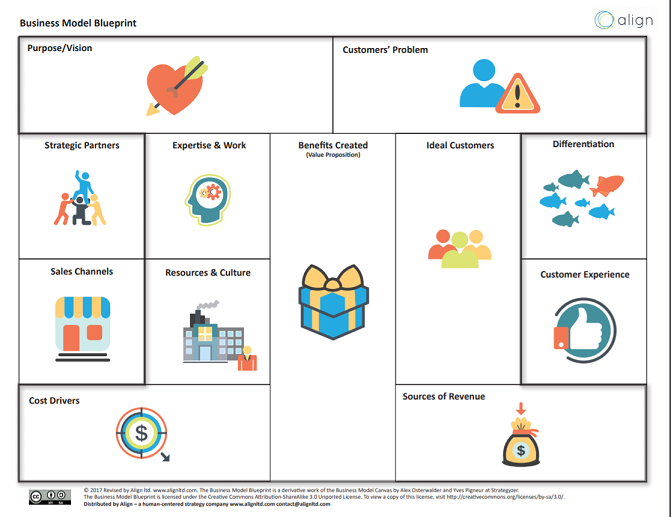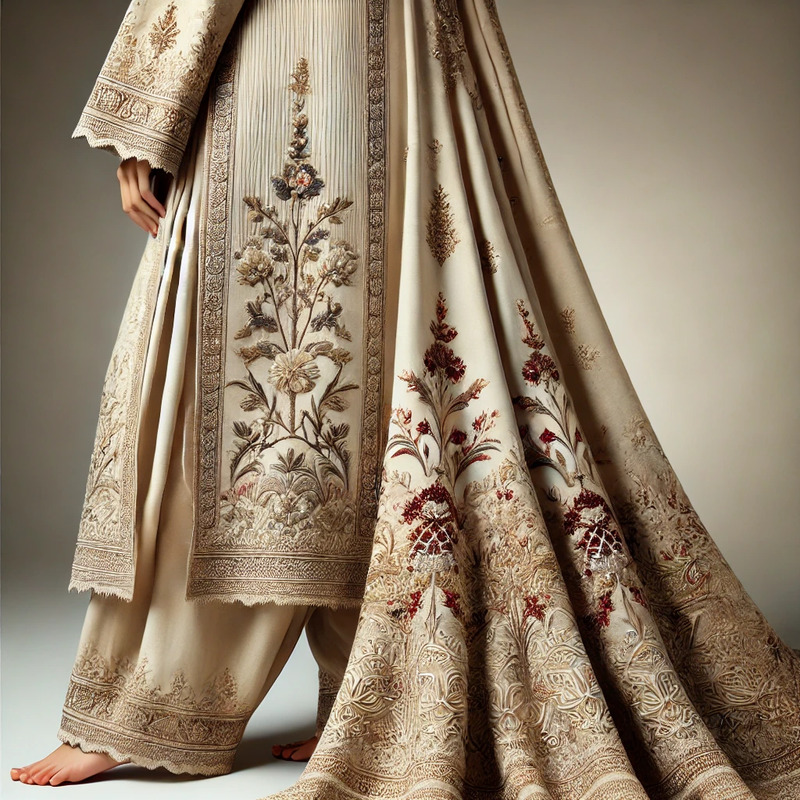Business Models
Business Models simply mean the methods with which companies plan to make money. For example a boutique makes money by designing clothes, a beauty salon by providing beautician's services.
There are several business types that serve as the basis for an entrepreneurs business model or part of a strategy for earning profit that can evolve depending on the nature of one’s business as well as the stage the business has reached.

Source: An interesting and simple blue print by Alignltd
Business Models - Types
The three main business types followed by most entities are as follows:
- Manufacturing
- Indenting
- Wholesale Business/Warehousing
You can always learn from the business models of other businesses to create your own model depending on what you want to do.
Business Model of Manufacturing
As the name indicates, the manufacturing model entails setting up of production facilities, hiring of staff, contracting of labour, buying of raw material inventory, packing and storage of raw material, work in process and finished goods. Sale from manufacturing units is in bulk quantities and is in proportion to the size of the unit.
Business Model of Indenting
Indenting entails rendering services as an agent between buyers and sellers. The agent sources goods from a variety of suppliers for buyers as per the requirements specified by the buyer. The best deals are always god quality with lowest rates.
The indenter has to ensure that the products being sourced through them is of good quality, is manufactured as per the specifications of the buyer and are shipped on time.
In case of outsourced manufacturing assignments, a buying house performs the functions of an agent, though a buying house is a more “involved” type of agent.
In case of a buying house – the buyer provides detailed designs and instructions to the Buying Agent who then contacts his list of manufacturers for rates and shipment schedules. The manufacturer gives the best possible rates along with shipment schedule. In case of competitive products the rates become finer while in value-added goods the rates can be better.
The indenter earns a percentage as commission for his services rendered to the sellers. The commission amount is built into the selling price. At times agents earn commission from both the buyer and the seller while some agents prefer to receive commission from the buyer.
In case of outsourced manufacturing where a Buying House monitors production, there is the requirement of inspection during production and at the time of shipment of goods. Some buyers in other countries insist on third party inspection by internationally acclaimed inspection services such as SGS, COTECNA etc. The Buying Agent then ensures that the inspection is carried out by these agencies.
The buying agent is also required to send production samples to ensure that the instructions of the buyers have been followed correctly. All these measures facilitate international trade smoothly.
Indenters play an important role in both imports and exports. In case of imports the indentors are responsible to source products of the buyers’ requirements from around the globe.
Indenters are appointed as authorized agents by exporters from other countries to promote the products of the exporters in their own regions/territory. They are not engaged usually in buying and reselling buy only book orders on behalf of the exporters.
The exporters keep a commission percentage for the agent which varies according to the terms of payment i.e. in case of cash payments, the commission percentage is more. Depending on the product the percentage can be from 0.5% to 2% for commodities to 5-7% for value-added goods. This type of business does not require a large capital lease or storage etc. the profit margin is not very large either.
Business Model of Wholesale
These types of businesses purchase goods and resell the same with a profit in their region or area of business.
This kind of business requires capital, storage space and marketing team to sell the goods. Promotional expenses are also to be borne by the whole-seller as well as to create a network of retailers who can sell the goods onwards.
Although this type requires large capital bases, it provides much better returns. The delivery and cash recovery systems all need to be well defined so that goods are turned effectively to maximize profits. If sales are slow or recovery of dues is late, the trade cycle slows down that can result in losses as the fixed costs remain constant.
For the purpose of maintaining healthy trade cycles, the wholesalers usually offer good terms for cash sales and discounts for early settlements.
At times the whole-sellers also appoint distributors whose main job is to distribute the goods to all the retailers that form the network of the product.
You can opt for any one business type to organize your business and then add other types to have a variety of income streams.
Business Models in the new world
Business models for technology driven and digital world at times combine various models to arrive at the desired results, learning from, acquiring and avoiding mistakes that caused failures for others. In an ever evolving digital era there are several consulting firms globally that are focusing on giving advisory on redesigning of business models.
- Home ›
- Knowledge Base ›
- Starting-Up a Business ›
- Business Models


